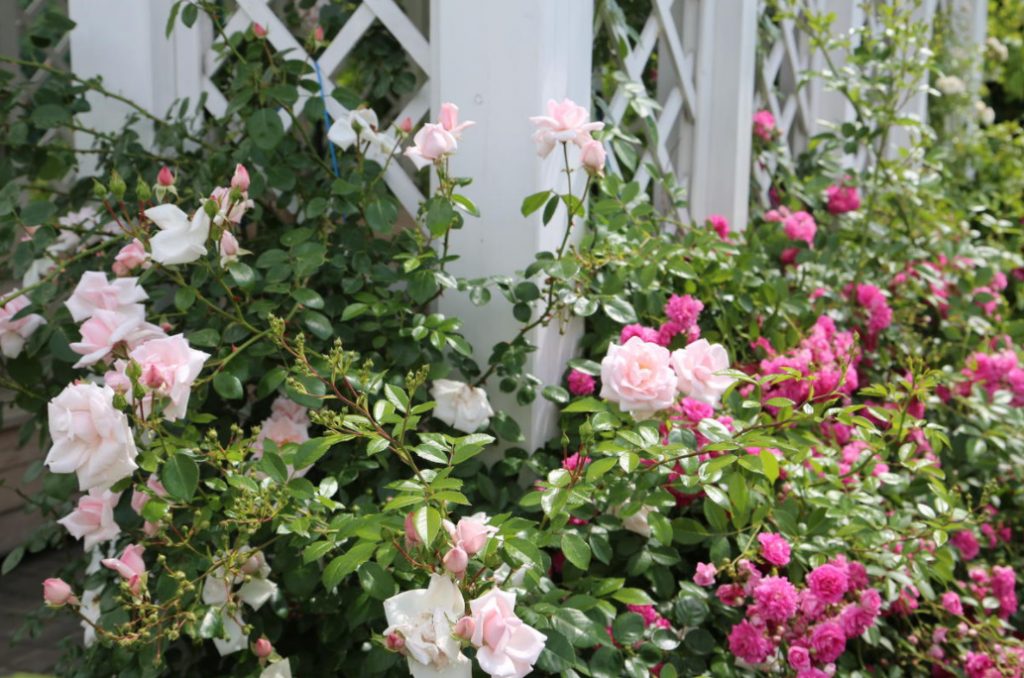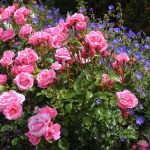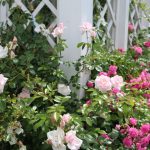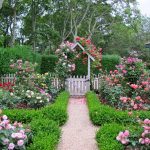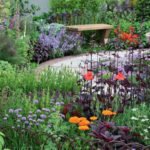Monochrome
If we are talking about a small flowerbed or group, then the most win – win option is to plant roses of the same variety, although fans are reluctant to take this step. In monochrome rose gardens, in my experience, fans of pastel colors are looking for self-expression more often, especially light pink (cold) tones in the style of the old garden (most old roses are in the cold part of the spectrum). Perhaps a rose garden seems like a simple solution and guarantees comfort and serenity.
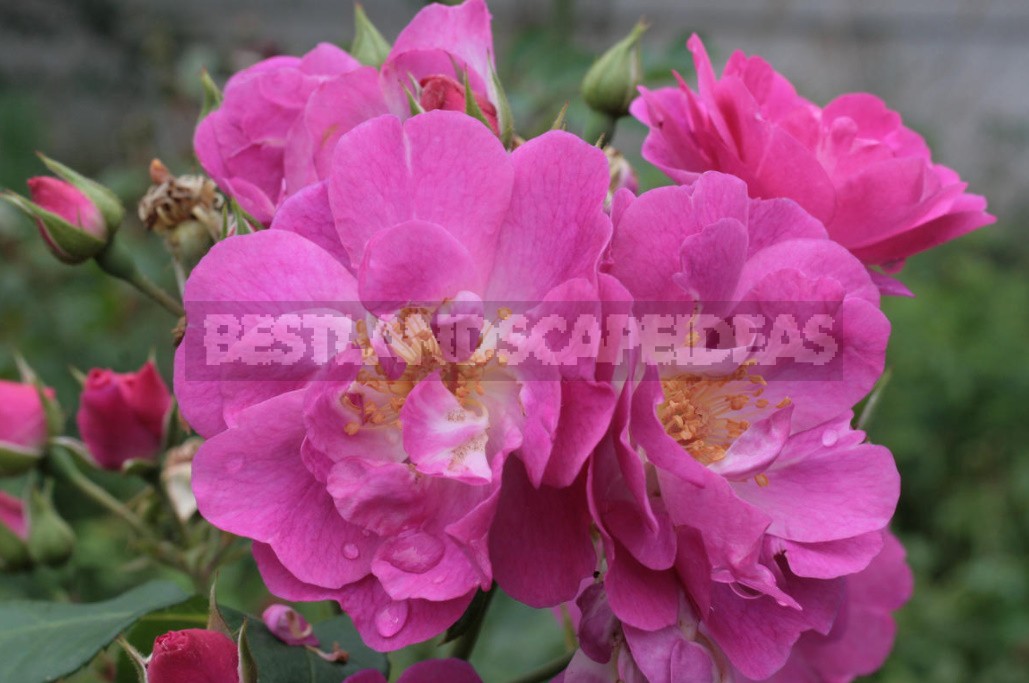
Modern roses of this range are amazing in the stage of half-bloom, but when they open, especially in the bright sun, they quickly lose these attractive shades, large plantings become “blurred” and evoke melancholy. Old roses retain a cool shade longer or turn silvery pink. Warm pink does not fade so easily, but there are much fewer varieties with such shades.
Analog
Sometimes there are recommendations that neighboring colors in a circle can be safely combined. This may be true, in my opinion, only if you work with colors from low to medium saturation, and all your combinations are close to monochrome. You get a relatively calm landing, and the questions of harmonious combinations depend on your taste.
And if you like the brightest and most saturated colors? If you have a good selection of red roses (there are not so many orange varieties), you can achieve harmony in the “red – orange”scheme. However, it requires a good knowledge of the characteristics of varieties, some virtuosity and a sense of proportion, you need to remember about the “temperature”. Orange color is successfully diluted with white and crimson, and bright red – spots of pale color. When using white, you also need to feel the measure, if you introduce several spots of white, the overall color scheme may look “ragged”.
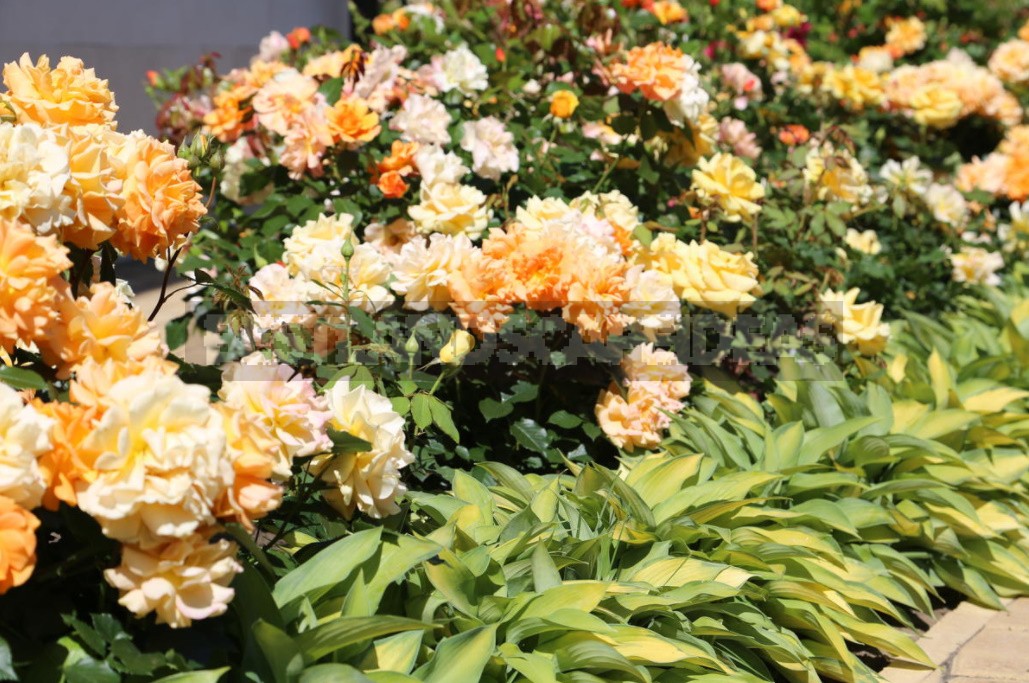
The main danger of the “all red” type occurs more often because choosing red roses from the catalog, you do not even assume that in reality they have completely different shades. If you choose roses for General planting on the border of flowers and balance on the edge of the circle, then your planting will be too “hot” and may cause concern. Conditions of soft contrast can be obtained by moving the distance between colors in a circle, moving in the red range towards cold shades. If you do not have the opportunity to choose roses in the garden during flowering, then I advise you to use colors that are about a quarter of the circle away.
We have a lot of red roses, and I love working with them. Here it is important that either dark or bright shades dominate, taking into account the “temperature”. In addition, in the warmest and coldest plantings, the third color is important, which is always present (foliage). In our example with red-orange roses, the foliage should noticeably cool the planting. Bright roses with a rich color always need abundant, dark green and shiny foliage, it not only serves as a background for flowers, but also adds attractiveness to the plant as a whole. Weak or sparse foliage in such roses is one of the main disadvantages of the variety.
Thanks to the assortment, you can often land in the “orange – yellow” range with a small addition of cold tones. You can say that your scheme ceases to be analog, but your task is not to reproduce the color scheme in its purest form, but to make a planting of your favorite yellow and orange roses.
Contrast
If you look at the color wheel, you will realize that most modern roses are in the warm part of the spectrum, and the possibility of contrasting combinations is not so great. Green roses in pure form, except for the funny anomaly ‘Green Rose’ (R. viridiflora) no. However, we do not feel a lack of green, because it is filled with foliage. Plant a group of red roses – this is a contrasting planting, and the depth of contrast can be softened by varying the saturation of red and shades of foliage.
Sometimes fans do not take into account the foliage at all, considering it just green. In fact, even in roses, the leaves differ not only in size and shape, density and Shine, but also in color shades. There are, for example, yellowish-green, grayish-green or bluish foliage, in recent years there are roses with variegated foliage. In addition to taking into account the characteristics of the foliage in such cases, you can play with the size and shape of the flower, especially with the shape of the inflorescences. If you aim for a minimum of green, choose richly blooming varieties with large and loose inflorescences.
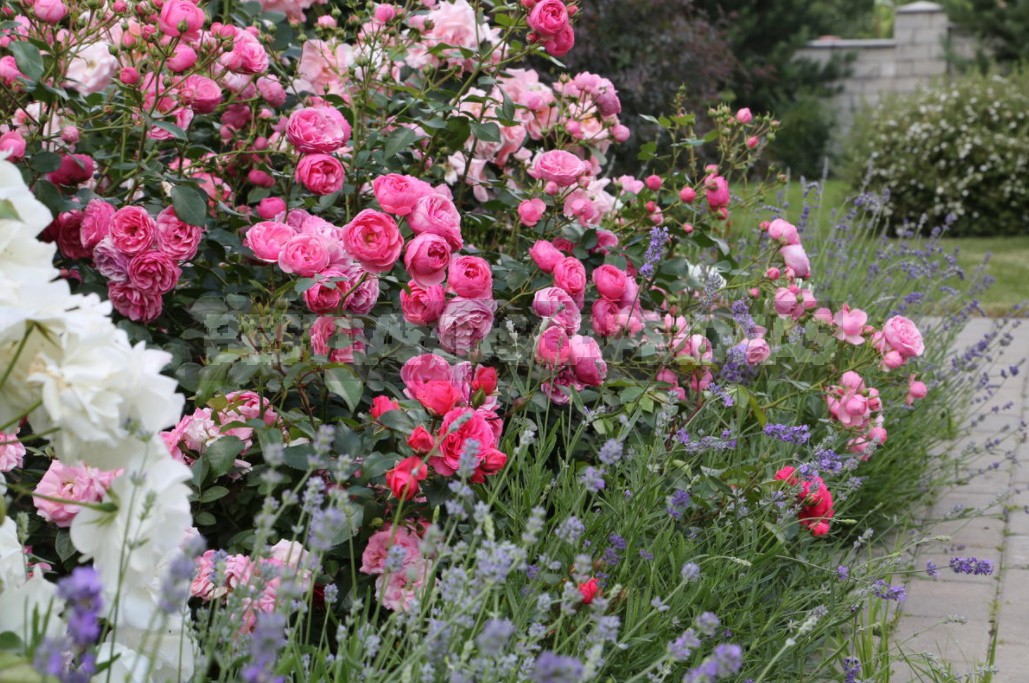
Experts believe that contrasting plantings are spectacular, attract attention, but it is difficult to achieve balance in them. The best pair is recognized as blue and yellow, this combination is massively and successfully used in flower beds, but in roses – this is the weak link. There are no blue and blue roses, although there is a conditional blue range that not everyone recognizes, but sometimes gardens need even conditional blue and conditional blue roses.
I use scars more often:
- ‘Lavender Dream’ (Interplant,1985),
- ‘Coeur Farouche’ (Delbard,1994),
- ‘Louis Bleriot’ (Meilland, 2008 ),
- ‘Global Water’ (Rosen Tantau, 2010),
- ‘Louis Bleriot’ (Meilland, 2008 ),
- ‘Global Water’ (Rosen Tantau, 2010),
- ‘Rhapsody in Blue’ (Gowlischaw/Warner, 2002) and
- ‘Violet Cloud’( Harkness,2007 ),
asmwell as a Rambler with a remontant bloom ‘Perennial Blue’ (Eurorosa/Rosen Tantau, 2004).
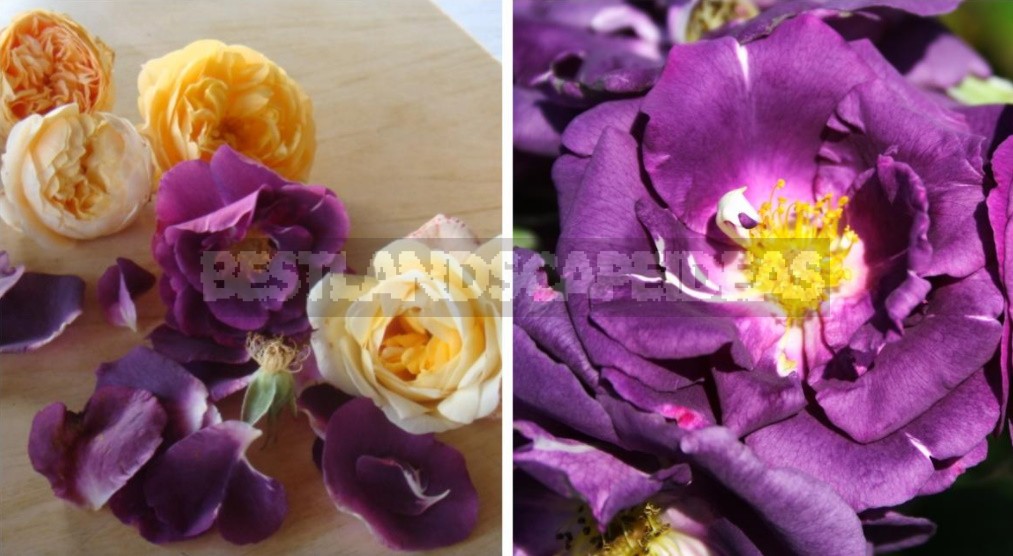
lovers and connoisseurs of contrasts can recommend a pair of “soft yellow – purple”, but this balance is very thin, so it is better to shift towards orange. Keep in mind that there are not many purple roses, and this color is distorted in catalogs. You will find the deepest, juiciest and most persistent purple shades in the varieties:
- ‘Astrid Grafinvon Hardenderg’ (RosenTantau, 2001),
- ‘Big Purple’ (Stephens,1986),
- ‘Chartreusede Parme’ (Delbard,1996),
- ‘Darcey Bussell’ (D.Austin, 2006),
- ‘Falstaf’ (Austin,1999),
- ‘Domainede St Jeande Beauregard’ (Delbard, 2005),
- ‘Rosede Resht’ (1880),
- ‘Sangria’ (Meilland, 2000).
Soften the contrast allow roses with a rich and stable crimson color, such varieties are also not very much, some roses quickly fade and do not give the expected effect. Stable color have:
- ‘Bordure Magenta’ (Delbard, 2004),
- ‘Manou Meilland’ (Meilland,1979),
- ‘Caprice de Meilland’ (Meilland, 1999),
- ‘Raoul Follereau’ (Delbard, 2005).

Schemes that involve the use of multiple colors lead away from monotony and soften contrasts. These schemes are easier to work with, although sometimes it may seem that you did not get what you wanted. This happens because it is not possible to reproduce the scheme with a live landing, and even at the age of three. Unfortunately, the possibilities of the variety cannot be expanded by your own wishes.
I would note two extremes in Amateur landings: the desire for monochrome or eye-cutting variegation. Monochrome planting (if you use several varieties) is only apparent simplicity, mistakes are more expensive here. This advice is easier to give than to implement. To get a luxurious landing, you need to know very well the characteristics of varieties. Using nuanced color transitions is a difficult task, because the color of live flowers is unstable.
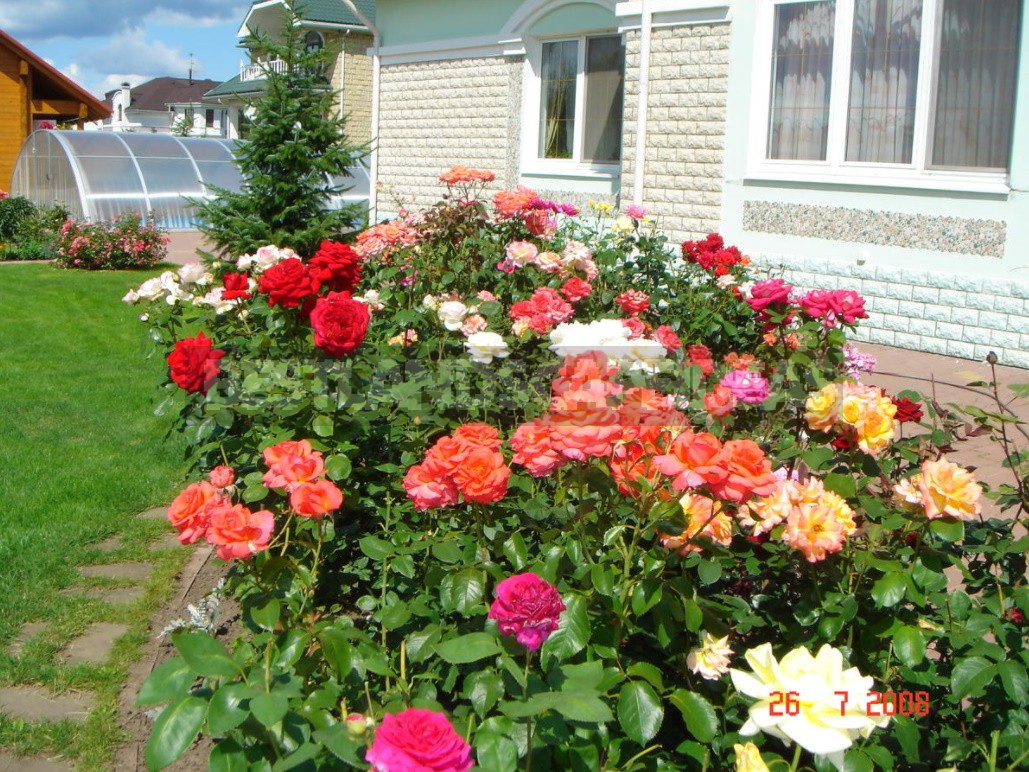
Variegated planting, as far as I can tell, is more often possible for Amateurs due to the huge selection of varieties. It is possible that our short summer inclines to bright colors. The most important thing is to determine the size of color spots and distribute them successfully. With a wide selection and knowledge of the characteristics of varieties, it is possible not to exceed the measure of diversity.
Multicolored roses
Many lovers are fascinated by two-color and multi-color roses, but there are difficulties in selecting companions. The most dangerous way, in my opinion, is when they start to select two-color roses for companions, guided only by photos from catalogs. Often roses in the garden look very different. You can achieve a successful solution, but this is already a professional level.
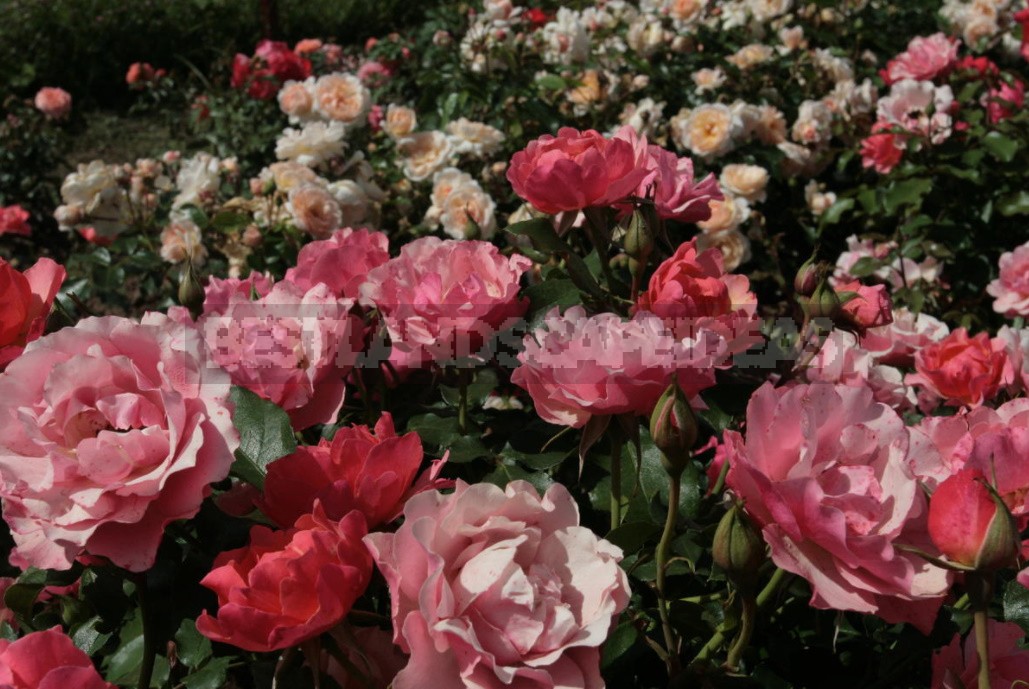
Usually these roses are separated by background varieties that do not attract attention, but only emphasize the perfection of others. Two-color roses can sometimes be used as dividing blocks. Contrasting two-tone roses always look better in a separate planting and light shading.
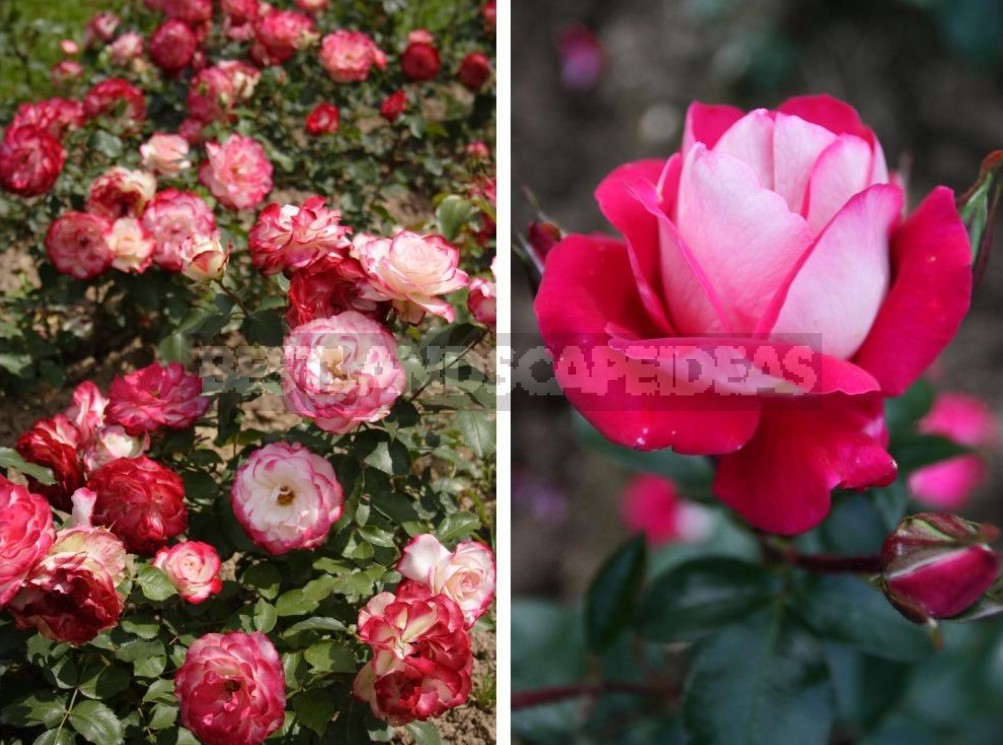
For multicolored, painted roses, I think the best solution is colorful panels, following the example of color solutions by impressionist artists: they also can not combine incompatible things, but always help out light additions from neutral or contrasting tones.
